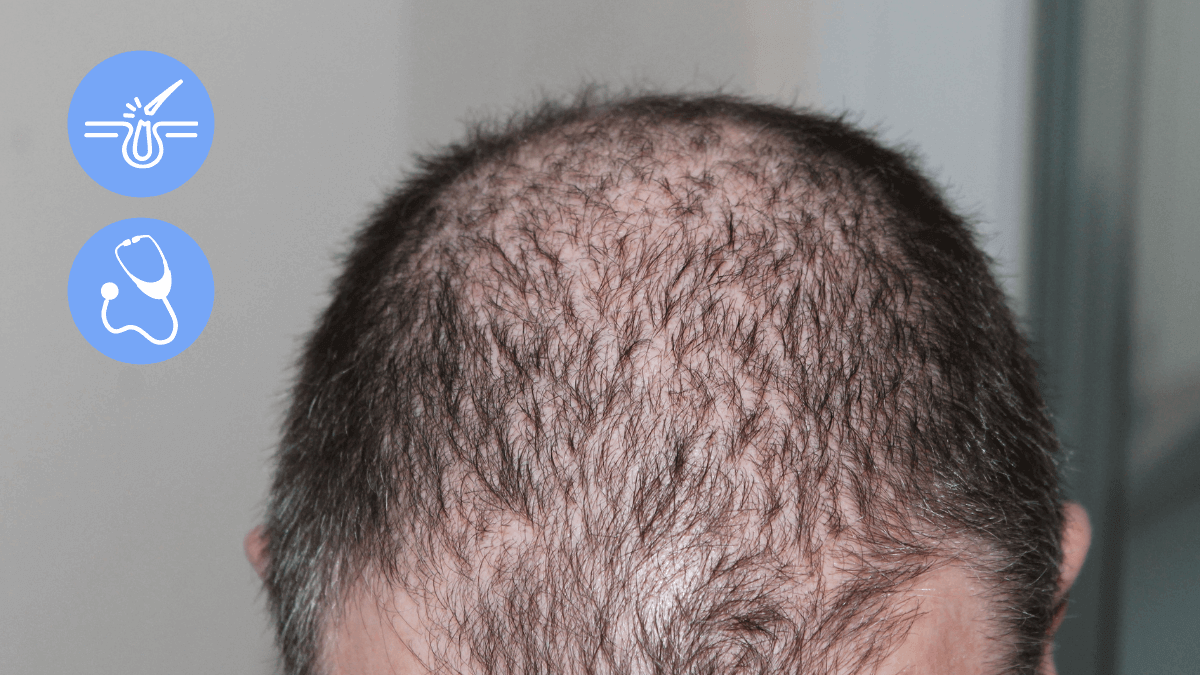TL;DR
➡ Our scalps naturally lose and regrow 50-100 hair per day. It only becomes a visible issue when our body cannot regrow hair as fast as it loses, which we call hair loss.
➡ The reasons for hair loss include genetic factors, extreme stress, aging, diet choices, illnesses, and many more.
➡ When hair loss progresses, it becomes balding. Based on your scalp’s balding stage, there are different methods for stopping and reversing it, but not a permanent cure or a solution for erasing baldness altogether.
➡ It is never too late. Getting an expert opinion can always help erase the bald look. If you are at an early age, you can even regrow your hair without needing a hair transplant with options such as Finasteride.
As science and medicine advance, we understand more and more about why hair loss happens, and how we can treat it.
We have developed various procedures and medications to stop or treat balding, and even though they’re not perfect we have many more options than we did 30 years ago.
But how close are we to a complete cure?
In this blog, I’ll try to give you a quick summary of what’s going on in the field of dermatology and especially on the topic of hair loss:
Table of Contents
Let’s start with why what happens, happens:
Why Do We Lose Hair?
I know you’ve already heard the famous hair loss statistic many times by now:
It is natural to lose 50-100 hair strands per day.
But why?
Isn’t hair loss something we’re trying to cure?
Why is losing a certain amount considered “natural”?
**
Your hair isn’t as static as you think.
A single hair follicle (which you can think of as the base factory of hair) grows a hair strand (the hair we can touch) for a certain amount of time and then lets it fall before growing a brand new one.
This whole process is called a growth cycle, and it consists of four phases:
- Anagen (growing phase),
- Catagen (transition phase),
- Telogen (resting phase),
- and Exogen (shedding phase).
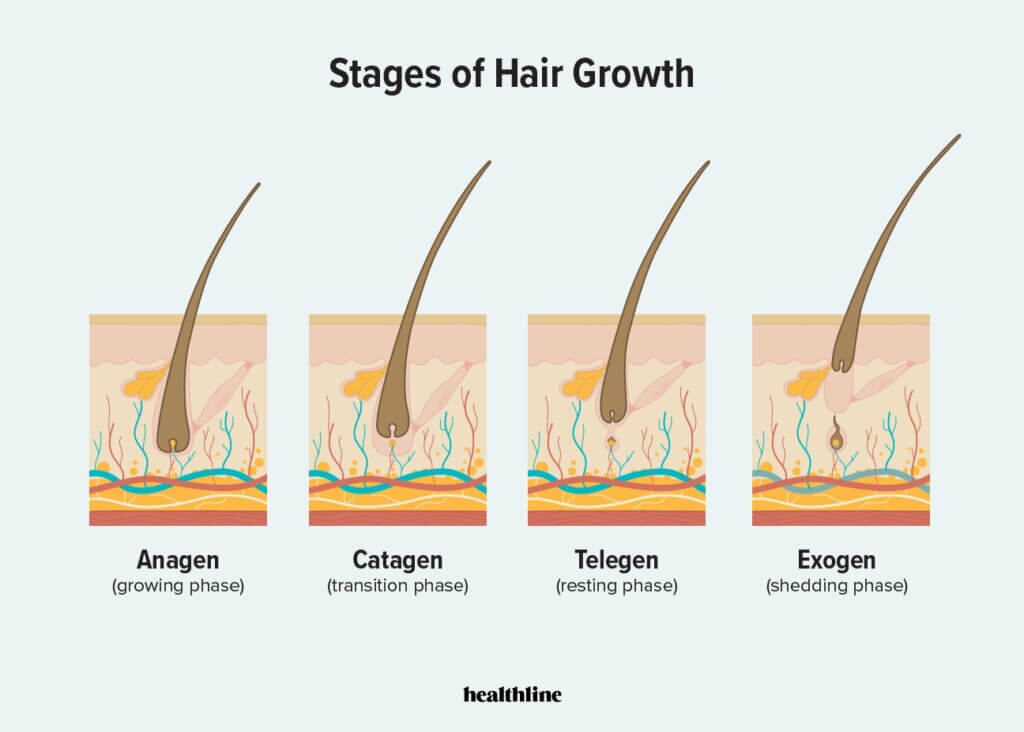
That’s why losing a certain amount of hair is natural, because it’ll grow back and be replaced shortly.
But the “hair loss” we can visibly see happens either when your body can’t keep up with the amount of hair you’re losing or when your hair follicles themselves start to fall out; which both result in thinning and complete balding over years.
There can be numerous reasons for both of these events to happen, but the core three cases that would cause hair loss are:
1️⃣ Your hair starts to fall out at a much higher rate than the growth rate
2️⃣ Your hair growth is significantly reduced to a rate lower than your hair loss rate
3️⃣ Your hair follicles deteriorate over time, get thinner and start to fall out
(Note that there isn’t a strict line between the three of these cases, as each case can actually result in or be caused by others.)
Now, let’s take a look at the most common, and some other common reasons for hair loss:
Pattern Baldness or Androgenetic Alopecia
For both men and women, pattern baldness is a highly-concerning issue.
Especially if you consider that 95% of all hair loss is caused by androgenetic alopecia.
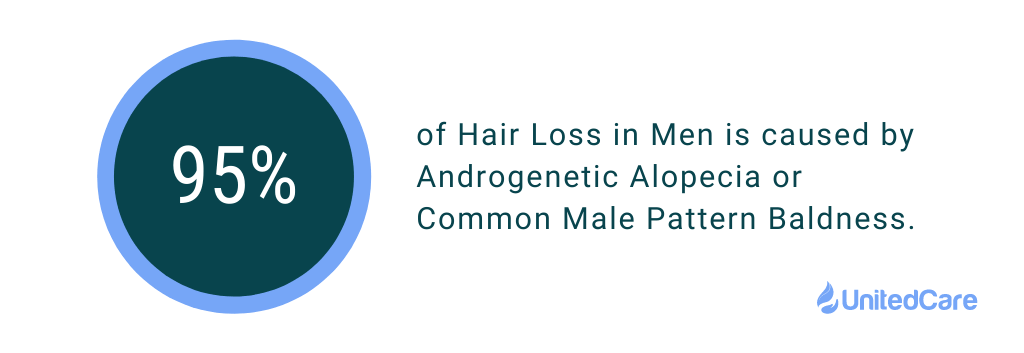
Pattern baldness is a hereditary condition that basically develops post-puberty and causes hair follicles to shrink and deteriorate.
But before we dive deeper into pattern baldness, let’s list the other common causes of hair loss.
There are other reasons too
Following androgenetic alopecia, the most common reasons for balding are:
- Aging (regardless of any other condition, every person experiences slight hair loss just because of aging)
- Metabolic Syndrome and Insulin Resistance
- Medications (most common of these being anticoagulants and chemotherapy medications)
- Oxidative Stress
- Iron Deficiency
- Tractional Alopecia
- Stress
- Extreme Dietary Habits
- Smoking
- Alcohol Consumption
How Pattern Baldness Works
Pattern baldness, otherwise known as androgenetic alopecia, is a condition where certain areas of hair follicles on your scalp are sensitized to male hormones and are deteriorated by them.
These male hormones, especially androgen, significantly increase during puberty; helping sexual development and hair growth throughout your body. But if you are genetically inclined to be androgen-sensitive, these hormones can cause more harm than good.
In androgenetic alopecia, certain areas on your scalp are the most sensitive to these hormones, so the hair thinning and balding start aggressively in these areas.
Your hair follicles start to shrink, growth cycles shorten, and the overall health of these follicles decreases significantly.
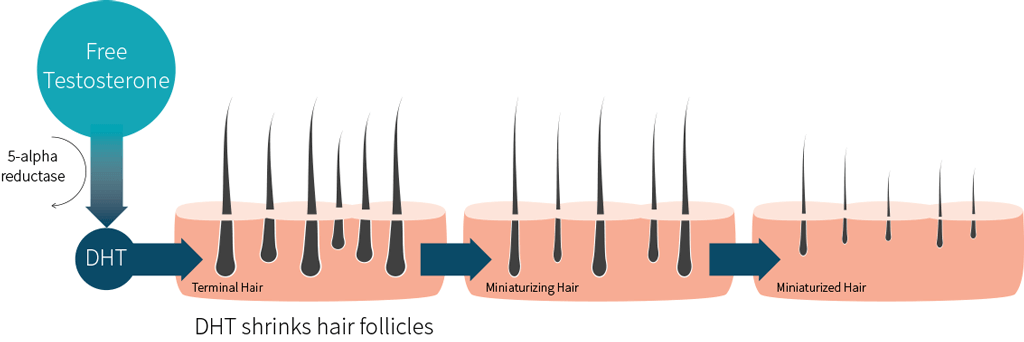
In the end, these hair follicles fall out, causing permanent hair loss where they’re located on your scalp. Over time, your hairline recedes, your hair starts thinning, and you notice hair loss.
And once a hair follicle is lost, there’s no way to get it back.
Curing Baldness
Every hair follicle that is, that was, and that will ever be (at least at the moment) on your scalp was produced before you were born.
You’ve had a certain amount of hair follicles at the start, and this number only decreased from that point on.
And that’s the tricky part of curing baldness, there isn’t a 100% definite solution, yet.
Let’s take a look at the solutions we have at hand before going through the possibilities for “the cure”.
1- Stopping/Minimizing Hair Loss
Here are the clinically-proven treatments and medications to stop further hair loss:
Minoxidil Rogaine
Minoxidil was invented as a chemical substance in the 1960s by Upjohn and found its place in the market as a hair loss medication in the year 1979 by Dr. Guinter Kahn.
It boosts hair growth by increasing the blood flow to the scalp, resulting in thicker hair and healthier follicles.
The topical foam and topical solution are the most popular forms of minoxidil. We suggest applying half a cap of the solution to your scalp twice a day, with a strong emphasis on the balding areas.
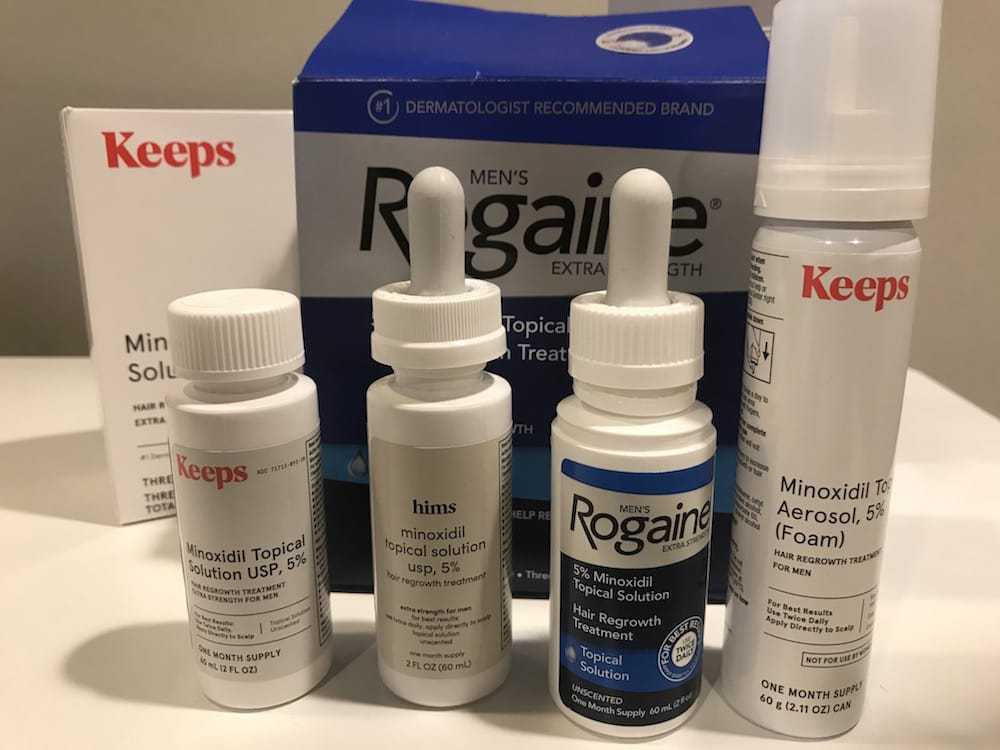
Finasteride
Finasteride, cleared for the treatment of male pattern baldness in 1997, is a medication that comes in the form of oral pills hair loss patients can take once a day.
It inhibits the action of the 5-alpha-reductase, an enzyme that converts testosterone to DHT, the hormone that causes hair follicles to shrink and fall out.
It is reported to be 83% effective in men and can act as a solid way to stop hair loss during early phases.
Low-level Laser Therapy
Laser therapy is a common treatment where the physician exposes your scalp to laser beams through a dedicated machine.
These laser beams irradiate the photons in your scalp area, which are absorbed by the weak cells of hair follicles and are used for strengthening the follicles.
Although numerous sessions over a large time span are required to see actual results from this treatment, it shows promise on different levels.
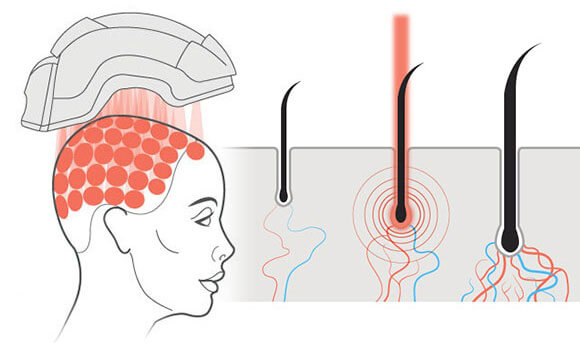
Platelet-rich Plasma
This treatment uses your body’s own healing agents, platelets, to repair your hair follicles and your hairline.
First, a small amount of your blood is drawn from your body. And then platelets in your blood are separated to later be injected into your scalp.
Although it lacks the evidence and sounds expensive, PRP injections might be a good try with an unexpectedly lower pricing range.
2- Restoring Lost Hair Through Hair Transplants
Currently, the only solution to restore your lost hairline and hair follicles on the bald areas of your scalp is through hair transplant surgeries.
Simply put, hair transplant surgeries are a redistribution of your healthy hair from the donor area to the recipient area.
As I’ve previously stated, only hair follicles in certain parts of your body are sensitive to androgen.
The rest of your hair follicles, especially the ones that are in the areas we call “safe donor area”, aren’t influenced by the increasing male hormones and they protect this characteristic once planted into the recipient area from the donor area, which is why hair transplants actually work.
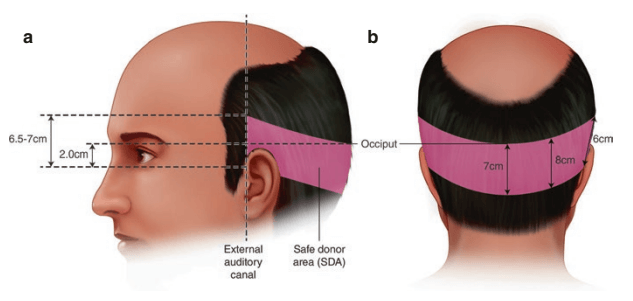
With enough hair grafts from the donor area, a skilled hair transplant surgeon can restore your hairline and bring your natural look back.
Your best bet for solving baldness is, without a doubt, a hair transplant.
With UnitedCare’s expert dermatologists, you can ensure that baldness never becomes an issue again:
Until we have a better alternative, hair transplants are inarguably the most efficient hair restoration method.
3- The Cure(?)
The development and advancement rate of science and medicine is getting higher and higher every day. In my opinion, we’ll certainly improve our existing treatments and come close to a definitive cure in the next decade.
There are certain studies at the moment that aim to create hair follicles from stem cells and then implant these follicles into your scalp, like hair transplant surgeries but without the harvesting stage. If or when this treatment will be available to us is an unanswered question.
Also, there are certain studies that aim to stop male pattern baldness from ever happening, for example by improving the androgen sensitivity of your follicles. But, there aren’t any promising breakthroughs with these studies too.
We’ll just have to wait a bit more and see.
Getting Expert Opinion is the First Step
As I’ve said, there isn’t a definitive cure for balding and hair loss yet.
If you’re looking to restore your natural look, you will need to find a hair transplant clinic with an expert staff and top-of-the-line equipment.
At UnitedCare, we made it our mission as dermatologist hair transplant surgeons to prioritize the well-being and safety of our patients alongside ensuring the success of their hair transplants.
We’re one click away: 👇
Before you can get cure it permanently, you must first learn how.
UnitedCare’s expert dermatologists are ready to help you with the first step:
Frequently Asked Questions (FAQs)
Can balding be cured?
In 2022, there are various methods to stop hair loss, promote hair growth, and even restore your hairline; but from an expert standpoint, none of these could be considered a “cure” to baldness. Although there are very promising studies and research to cure baldness once and for all such as stem cell transplants, their progress is unclear at the moment.
How can I regrow my baldness?
Especially for male pattern baldness, regrowing your lost hair is an impossible task since it was the hair follicles that you’ve lost, not the hair strands. But, you can use certain medications or drugs to prevent further balding or promote new hair growth; and even restore your natural hairline and have a full head of hair with hair transplant surgeries.
Can hair grow back after balding?
If your baldness is caused by male pattern baldness, hair will practically never naturally grow on your scalp. But, you can use the non-bald areas of your scalp that are fit to be donor sites to actually cover up bald areas on your scalp through a hair transplant surgery.
